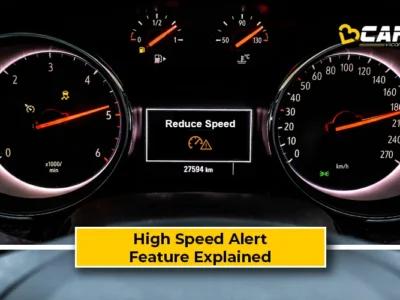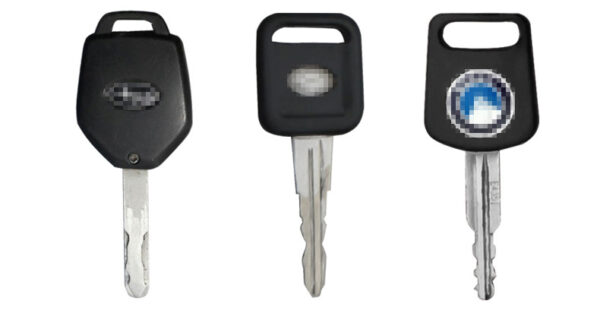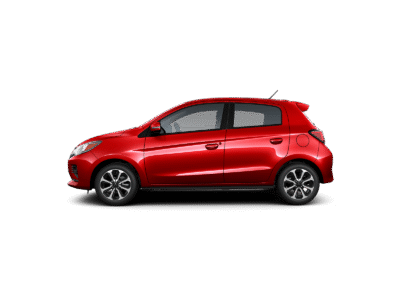
How to Start a Nissan Juke with a Manual Key: A Complete Step-by-Step Guide

Starting your Nissan Juke with a manual key is simple once you know the proper sequence. Whether your key fob battery is dead, or the vehicle’s electronics are unresponsive, the manual key provides a reliable backup. Let’s walk through every step clearly to ensure your Juke starts smoothly in any situation.
- Understanding the Manual Key System
- Step 1: Locate the Keyhole
- Step 2: Insert the Manual Key
- Step 3: Unlock the Driver’s Door
- Step 4: Enter the Vehicle
- Step 5: Access the Ignition Slot
- Step 6: Turn the Key to Start the Engine
- Step 7: Check Dashboard Indicators
- Step 8: Engage the Gear and Release the Handbrake
- Step 9: Drive Safely and Confidently
- Emergency Tips: When the Key Won’t Turn
- Maintaining Your Manual Key and Lock System
- Common Reasons You Might Need the Manual Key
- Troubleshooting: If the Car Still Won’t Start
- Key Takeaways
- FAQs
Understanding the Manual Key System
Every Nissan Juke comes with a manual key concealed within the key fob. It’s not just a spare — it’s your fail-safe when modern systems fail. This physical key gives you mechanical control over entry and ignition, ensuring you can always start your car.
Step 1: Locate the Keyhole
- Look at the driver’s door handle — the keyhole is subtly built into it.
- On some Juke models, it’s covered by a small cap to maintain the car’s sleek design.
- Gently pry off the cover with the edge of your key if necessary (be careful not to scratch the paint).
Pro Tip: Always check under good lighting — the lock is often flush with the handle’s design.
Step 2: Insert the Manual Key
Once located, insert the key carefully into the cylinder.
- Ensure the key is fully seated.
- Do not apply excessive force; the mechanism should engage smoothly.
- If it feels tight, wiggle the key slightly to align the internal tumblers.
Step 3: Unlock the Driver’s Door
Turn the key clockwise to unlock.
- You’ll hear a distinct click confirming the door has disengaged.
- If it resists turning, remove and reinsert it to ensure proper alignment.
- Some older models may require a slightly firmer twist — but never force it.
Once unlocked, pull the handle to open the door and gain access to the cabin.
Step 4: Enter the Vehicle
Slide into the driver’s seat and make yourself comfortable:
- Adjust your seat and mirrors.
- Press the brake pedal (especially for automatic models).
- Check that all electronic accessories are off to reduce battery load during startup.
Step 5: Access the Ignition Slot
For Key-Start Juke Models (Pre-2019)
- Insert the manual key into the ignition slot located on the steering column.
- The slot is just below the steering wheel — visible once you’re seated properly.
For Push-Start Models
Even push-start Jukes have an emergency ignition override:
You may be interested in reading Regular Maintenance Tips to Prevent Fiat 500 Engine Overheating
Regular Maintenance Tips to Prevent Fiat 500 Engine Overheating- Place the manual key fob near the start button.
- Some models allow the car to detect the transponder chip even if the battery is low.
- If your car still doesn’t respond, the manual ignition slot (often hidden) can be used by removing a small plastic cap.
Step 6: Turn the Key to Start the Engine
Rotate the key clockwise through its positions:
- ACC (Accessories) – Powers minor electricals.
- ON – Activates the dashboard, fuel pump, and ignition system.
- START – Cranks the engine.
Hold it briefly until you hear the engine start, then release. Avoid holding it too long, as this can strain the starter motor.
Step 7: Check Dashboard Indicators
When the engine fires up, your dashboard will illuminate with system lights.
✅ Normal Lights: Oil, Battery, and ABS indicators will appear briefly, then go out.
⚠️ Warning Lights: If any remain on (e.g., engine or immobilizer), don’t ignore them — check your owner’s manual or consult a mechanic.
This brief check ensures your Juke’s systems are fully operational before driving.
Step 8: Engage the Gear and Release the Handbrake
- For manual transmissions, press the clutch and select 1st gear or reverse.
- For automatics, press the brake and shift into Drive (D) or Reverse (R).
- Slowly release the handbrake while maintaining gentle pressure on the accelerator.
Step 9: Drive Safely and Confidently
Now that your Nissan Juke is running, ease into your journey:
- Maintain smooth acceleration.
- Check mirrors and surroundings before moving off.
- If your fob battery was dead, replace it promptly to restore full keyless function.
Emergency Tips: When the Key Won’t Turn
If your key refuses to turn in the ignition:
- Steering lock engaged: Slightly wiggle the steering wheel while turning the key.
- Frozen or dirty cylinder: Spray a small amount of lock lubricant (avoid WD-40).
- Damaged key: Try your spare key to rule out wear or bending.
Maintaining Your Manual Key and Lock System
- Clean your key and ignition slot occasionally with compressed air.
- Lubricate once a year using graphite-based lubricants.
- Avoid exposing the key to water or extreme temperatures.
- Store your spare key in a secure, accessible place at home.
Common Reasons You Might Need the Manual Key
- Dead key fob battery.
- Faulty push-start system.
- Low car battery voltage.
- Electronic immobilizer malfunction.
- Physical damage to the fob.
Knowing these situations prepares you for any unexpected scenario.
You may be interested in reading Regular Maintenance Tips to Prevent Fiat 500 Engine Overheating
Regular Maintenance Tips to Prevent Fiat 500 Engine Overheating How to Check and Maintain Fluid Levels in Your Fiat 500
How to Check and Maintain Fluid Levels in Your Fiat 500Troubleshooting: If the Car Still Won’t Start
If the Juke fails to start even after following these steps:
- Battery Check: Weak battery voltage can prevent ignition.
- Immobilizer Reset: Wait a few minutes; sometimes the system resets automatically.
- Fuse Inspection: Check the ignition and ECM fuses.
- Starter Relay: Listen for a clicking sound — silence may mean a failed relay.
If the issue persists, contact a qualified Nissan technician.
Key Takeaways
- Always carry your manual key, even if you use the push-button feature daily.
- Familiarize yourself with the keyhole and ignition locations.
- Regularly maintain both the key and lock mechanisms.
- Replace your key fob battery every 12–18 months.
- Don’t panic during electronic failure — the manual key guarantees access and ignition.
FAQs
1. Can I start a Nissan Juke if the key fob battery is completely dead?
Yes. Use the manual key to unlock the door and insert it into the ignition to start the vehicle.
2. Where is the hidden keyhole on a Nissan Juke?
It’s located on the driver’s door handle, often covered by a small plastic cap.
3. How do I remove the cap to access the keyhole?
Insert the tip of your manual key under the cap edge and gently pry it off.
4. What if my Juke has a push-start button?
Hold the fob close to the start button — the car can often read the transponder chip even with a dead battery.
5. Is it bad to use the manual key often?
No, but frequent use can wear the lock over time. Keep it lubricated for smooth operation.
 Regular Maintenance Tips to Prevent Fiat 500 Engine Overheating
Regular Maintenance Tips to Prevent Fiat 500 Engine Overheating How to Check and Maintain Fluid Levels in Your Fiat 500
How to Check and Maintain Fluid Levels in Your Fiat 500 Preventing Electrical Issues in Your Fiat 500: What to Look For
Preventing Electrical Issues in Your Fiat 500: What to Look ForIf you want to know other articles similar to How to Start a Nissan Juke with a Manual Key: A Complete Step-by-Step Guide you can visit the category Tips.
Deja una respuesta






More content of your interest